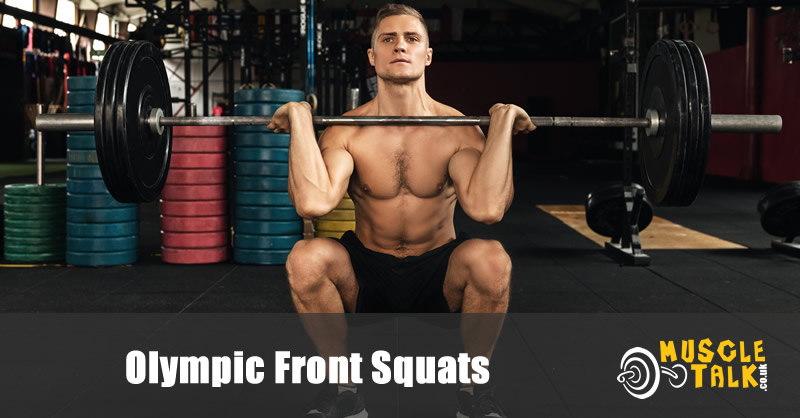This is a historic article from September 2010 by Neil Stewart aka redneil75
Recently, I’ve been learning how to front squat in the classic Olympic-style purely from watching videos and reading posts and articles on-line. Far from perfect coaching but up to now it’s all I have had.

Anyway, I have been persevering like this for a good few weeks and have suffered some serious wrist pain in the process, I now seem to have overcome this and can front squat Olympic-style in relatively good form.
Now, I am not saying my form is perfect – far from it – but it massively improved after a eureka moment last week. A friend, who has always been a great support to me, suggested an article on how I got to where I’m at and a possible video tutorial.
To begin with I started front squatting with my arms in the classic Olympic position. Everything looked pretty good, not too different from what I had seen in the videos I had watched or the articles and posts I had read. I would take the bar off the squat rack, step out of it and then squat deep, right down between my legs, looking up all the time, with my back slightly arched and chest up. Then I would concentrate on driving my feet through the floor and power my way back up to the start position.
My wrists ached but I put this down to the fact that I was new to it and would have to work on my wrist flexibility. So I started doing a few wrist stretches and continued lifting as I was. As the weights went up, things became slightly easier as the weight of the bar pushed my wrists back anyway but I was still in a great deal of pain between sets and after my workout. It became increasingly frustrating knowing that my wrists were giving out way before my quads.
That was until I came across this video
Please, anyone who wants to give Olympic front squats a go, watch that video. It really is a great demonstration and explanation of exactly what I was doing wrong and what I had to do to correct it.
Essentially you have to realise that having the bar across your throat is not a bad thing, it’s just something that’s going to happen when you are using the correct technique. I knew before that the bar rested on my chest and front deltoids (area where shoulder meets chest) but I also had it on all fingers of both hands. This was what was causing me the great wrist pain. It was nothing to do with lack of flexibility.
The next time I walked up to the rack I had my elbows raised and scapulae spread so my triceps were parallel to the floor. I rested the bar on my chest, the front of my shoulder area and collar bone and let it touch my throat.
Then I gently placed two fingers of either hand on the bar just outside my shoulder area so they were really just there as a guide as to where the bar should be. I lifted the bar, stepped out of the rack and concentrated on trying to keep my elbows as high as possible so as to keep the pressure off my wrists and fingers, squatted right down with my back arched, chest up and then powered back up again.
I couldn’t believe it. No wrist pain! I went to town doing more and more sets and generally speaking it was the same, no wrist pain, I was actually working my legs and butt (glutes) properly without hurting my wrists. With the bar resting across the throat breathing is hard so I tend to keeps sets to reps of 3-5 and do plenty of them. Again, repetition breeds better form.
Now, as I said at the start, my form is far from perfect yet. Especially when I tire, my elbows tend to drop a little putting the pressure back onto my wrists, but things are going so much easier for me. I’m still not shifting massive weights but last weekend I did 8 sets of front squats, building up to a top weight of 80kg for 3 sets of 5 reps. I also did 3 sets of squat-cleans at 60kg, followed by 3 sets of regular back squats. Some hamstring and calf work followed but that’s not relevant to what we are discussing here.
To summarise, from my experience the key factor to front squatting in the classic Olympic position (which allows you to clean and press the bar in the same motion unlike any other front squat) is realising that the bar will hit your collar bone and come across your throat. Embrace this, don’t be afraid of it.
Other important concerns are keeping your scapulae spread, elbows high with your triceps as close to parallel to the floor as possible, head and chest up and butt out. As with back squats squat down very deep between your legs and drive up, powering the bar along with your hips back to the standing position. Keep the reps low because of the breathing issue and enjoy being an Olympic lifter!
